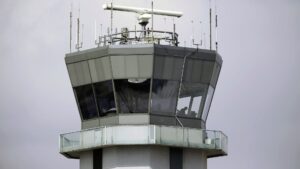Urgent Call for Air Traffic Control Reforms: Key Insights from the Aviation Industry
As air travel continues to surge in demand, the aviation industry is facing a growing crisis in air traffic control (ATC) staffing and technology. Last week, industry leaders once again implored lawmakers to prioritize the modernization of ATC systems and the hiring of additional controllers during a House committee hearing. This comes in the wake of a tragic mid-air collision that claimed the lives of 67 individuals, marking the deadliest airline accident in the U.S. since 2001.
Current Challenges in Air Traffic Control
Transportation Secretary Sean Duffy recently announced that the Trump administration is making strides to address these staffing shortages. Starting salaries for new air traffic controllers will increase by 30% for those who attend the Federal Aviation Administration’s (FAA) training academy, a move aimed at attracting new talent into a field that has seen a 9% decline in staffing since 2012. While travel demand has skyrocketed, a well-resourced team of air traffic controllers is essential to ensure safety and efficiency in the skies.
Despite these efforts, the FAA is not without its challenges. Under ongoing cost-cutting measures initiated by billionaire advisor Elon Musk, approximately 300 FAA staff have been laid off. While reports confirm that air traffic controllers were excluded from these layoffs, the general atmosphere of uncertainty has affected morale within the agency. As David Spero, president of Professional Aviation Safety Specialists, pointed out in his testimony, such measures can “demoralize the entire workforce” and detract from the FAA’s critical mission—to maintain the safety and effectiveness of the U.S. aviation system.
The Push for Modern Technology
Industry representatives, including Nick Calio from Airlines for America, underscored the importance of modernization in enhancing ATC capabilities. They argued for the adoption of innovative procurement methods and collaboration with private sector experts to streamline processes within the FAA. Utilizing Musk’s “Department of Government Efficiency” could potentially break down barriers currently hindering the acquisition of updated commercial products and services.
Interestingly, these discussions about modernization also reflect a broader trend in the aviation industry—an urgent need for tech-driven solutions. Long-term investments in cutting-edge technology, such as advanced radar systems and automated communication tools, could fundamentally improve air traffic safety and operational efficiency.
The Future of Air Traffic Control
The intersection of increased travel demand, technological advancement, and staffing shortages creates a pressing need for comprehensive reforms in the ATC system. Above all, ensuring that air traffic controllers are equipped with the right tools and an adequate workforce is critical to safeguarding the future of air travel in the U.S.
As the aviation landscape evolves, it’s crucial for both lawmakers and industry stakeholders to work collaboratively in addressing these challenges head-on. The implementation of proactive strategies and forward-thinking solutions will be key to navigating the complexities of air traffic management.
For more insights and updates on aviation and investment opportunities, stay connected with Extreme Investor Network. We’re committed to bringing you the latest from the frontlines of the business world, providing you with information and analysis that you won’t find anywhere else. Join our community today and become part of the conversation.

